View Programs and Tools that could be used to Improve Water Quality and Mitigate Flood Hazards
Landscape has a direct impact on flood control, and water quality, and local climates
Water Quality
Wetlands along streams and coastlines protect banks from erosion. Mats of plant roots resist wave energy to keep the soil in place. Riparian buffers (bands of native trees planted or preserved along a waterway) serve a similar role in erosion prevention and filtration. As the water is filtered by soil, microbes, and wetland plants, pollutants are removed naturally.Additionally, vegetation over a stream helps keep the water cool and provides organic food for aquatic organisms.
Water Quantity
Water seeping into the soil helps to maintain groundwater levels.
Flood Mitigation
Wetlands have an enormous capacity to store floodwater and release it slowly. One acre of wetlands can hold 1 to 1.5 million gallons of water. A strong network of wetlands is capable of lessening or preventing flooding downstream. Natural wetlands, constructed treatment wetlands such as stormwater wetlands, and Low Impact Development techniques such as rain gardens all decrease flooding by slowing the flow of surface water running into streams and lakes.
Climate Moderation
Natural green spaces, including wetlands, counteract the Heat Island Effect, which saves cooling costs and reduces air pollution.
Learn about Water Quality and Flood Mitigation from the Experts
Natural Resource Conservation Service: Texas
Texas State Soil and Water Conservation Board

Programs and Tools that could be used to Improve Water Quality and Mitigate Flood Hazards
Many agencies provide technical and financial assistance to land owners who wish to improve local water quality and quantity or mitigate for flood hazards.
Click on a program below to learn more
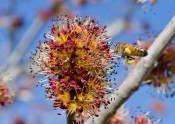 Agricultural Conservation Easement Program’s Wetland Reserve Easements - CEP WRE, created in the 2014 Farm Bill is the newest version of the previously authorized Wetlands Reserve Program. Under ACEP WRE, the Natural Resources Conservation Service (NRCS) provides financial and technical support to private landowners and Indian tribes to protect, enhance, or restore wetlands. A wetland reserve easement is used to accomplish this protection. Read More →
Agricultural Conservation Easement Program’s Wetland Reserve Easements - CEP WRE, created in the 2014 Farm Bill is the newest version of the previously authorized Wetlands Reserve Program. Under ACEP WRE, the Natural Resources Conservation Service (NRCS) provides financial and technical support to private landowners and Indian tribes to protect, enhance, or restore wetlands. A wetland reserve easement is used to accomplish this protection. Read More → AgriLife Extension Program - Texas A&M AgriLife Extension Service The AgriLife Extension Program, a part of Texas A&M AgriLife Extension Service, is an education agency with a statewide network of professional educators and volunteers. AgriLife presents research-based education programs on a wide variety of topics from 4-H Youth Development to Disaster Management. Courses of interest to wetland owners may include restoration and conservation of wildlife habitat, wildlife and fisheries management, water use efficiency, watershed health and protection, and wetland restoration. The AgriLife Extension Program website offers online courses and job training, access... Read More →
AgriLife Extension Program - Texas A&M AgriLife Extension Service The AgriLife Extension Program, a part of Texas A&M AgriLife Extension Service, is an education agency with a statewide network of professional educators and volunteers. AgriLife presents research-based education programs on a wide variety of topics from 4-H Youth Development to Disaster Management. Courses of interest to wetland owners may include restoration and conservation of wildlife habitat, wildlife and fisheries management, water use efficiency, watershed health and protection, and wetland restoration. The AgriLife Extension Program website offers online courses and job training, access... Read More →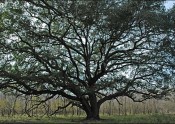 Carbon Storage and Credits: Landowner/Developer and Aggregators - Various Private and Nonprofit Entities Choosing a Marketplace for Carbon Trade No one single program deals with carbon offset credits. One branch of the carbon market is the compliance market where carbon emitters are required to offset their emissions by local, state, federal, or international policy. The other branch of the carbon market is the voluntary market where individuals and businesses volunteer to purchase carbon offsets in order to reduce their greenhouse gas emission impacts. There are several marketplaces (often called exchanges) for buyers and sellers of carbon... Read More →
Carbon Storage and Credits: Landowner/Developer and Aggregators - Various Private and Nonprofit Entities Choosing a Marketplace for Carbon Trade No one single program deals with carbon offset credits. One branch of the carbon market is the compliance market where carbon emitters are required to offset their emissions by local, state, federal, or international policy. The other branch of the carbon market is the voluntary market where individuals and businesses volunteer to purchase carbon offsets in order to reduce their greenhouse gas emission impacts. There are several marketplaces (often called exchanges) for buyers and sellers of carbon... Read More →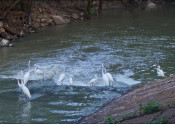 Clean Water State Revolving Fund Loan Program: Texas Loan Program - Texas Water Development Board (TWDB) The Clean Water State Revolving Fund (CWSRF), which is authorized by the Clean Water Act and funded by the US Environmental Protection Agency (EPA), provides below-market interest rate loans to applicants wishing to implement projects for estuary management, nonpoint source pollution management, or wastewater management. Applicants can be cities, counties, districts, river authorities, and private owners. Funding can be used for planning, design, and construction of projects. CWSRF can be used for wetland projects. According to the EPA, wetland projects are usually categorized... Read More →
Clean Water State Revolving Fund Loan Program: Texas Loan Program - Texas Water Development Board (TWDB) The Clean Water State Revolving Fund (CWSRF), which is authorized by the Clean Water Act and funded by the US Environmental Protection Agency (EPA), provides below-market interest rate loans to applicants wishing to implement projects for estuary management, nonpoint source pollution management, or wastewater management. Applicants can be cities, counties, districts, river authorities, and private owners. Funding can be used for planning, design, and construction of projects. CWSRF can be used for wetland projects. According to the EPA, wetland projects are usually categorized... Read More →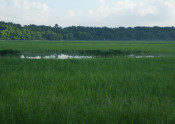 Conservation Reserve Program Continuous Signup - USDA Farm Service Agency (FSA) The Continuous Conservation Reserve Program (CCRP) is an agricultural land conservation program administrated by the Farm Service Agency (FSA) and is an offshoot of the Conservation Reserve Program (CRP). Like CRP, it is a voluntary program available to farmers and other agricultural and silvicultural operations with the mission to restore and protect environmentally sensitive lands with special emphasis on wetlands, wildlife habitat, and water quality buffers. As with the CRP program, farmers remove sensitive areas from agricultural production for 10 to 15 years.... Read More →
Conservation Reserve Program Continuous Signup - USDA Farm Service Agency (FSA) The Continuous Conservation Reserve Program (CCRP) is an agricultural land conservation program administrated by the Farm Service Agency (FSA) and is an offshoot of the Conservation Reserve Program (CRP). Like CRP, it is a voluntary program available to farmers and other agricultural and silvicultural operations with the mission to restore and protect environmentally sensitive lands with special emphasis on wetlands, wildlife habitat, and water quality buffers. As with the CRP program, farmers remove sensitive areas from agricultural production for 10 to 15 years.... Read More →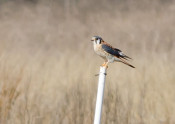 Conservation Reserve Program General Signup - USDA Farm Service Agency (FSA) The Conservation Reserve Program (CRP) is an agricultural land conservation program administrated by the Farm Service Agency (FSA). Twenty years after its inception in 1985, CRP had reduced 450 million tons of soil erosion per year, restored 2 million acres of wetlands and adjacent buffers, reduced 48 million metric tons of carbon dioxide from the air, and protected 170,000 miles of stream. According to the Texas Parks and Wildlife Department, Texas currently has 3 million acres enrolled in CRP. CRP offers an annual... Read More →
Conservation Reserve Program General Signup - USDA Farm Service Agency (FSA) The Conservation Reserve Program (CRP) is an agricultural land conservation program administrated by the Farm Service Agency (FSA). Twenty years after its inception in 1985, CRP had reduced 450 million tons of soil erosion per year, restored 2 million acres of wetlands and adjacent buffers, reduced 48 million metric tons of carbon dioxide from the air, and protected 170,000 miles of stream. According to the Texas Parks and Wildlife Department, Texas currently has 3 million acres enrolled in CRP. CRP offers an annual... Read More →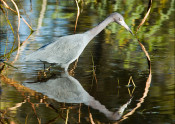 Conservation Stewardship Program (CStP) - USDA Natural Resources Conservation Service (NRCS) The Conservation Stewardship Program (CStP) is a voluntary conservation program administered by US Department of Agriculture (USDA) Natural Resources Conservation Service (NRCS). The program’s mission is to assist agricultural producers in maintaining and enhancing their existing conservation efforts, especially in relation to Texas’ program priorities: water quantity, soil erosion, and plant health and condition. The theme for CStP is “payment for performance“. Eligible lands include privately owned and Tribal agricultural lands, croplands, pasturelands, rangelands, grasslands, and nonindustrial private forest land. This includes... Read More →
Conservation Stewardship Program (CStP) - USDA Natural Resources Conservation Service (NRCS) The Conservation Stewardship Program (CStP) is a voluntary conservation program administered by US Department of Agriculture (USDA) Natural Resources Conservation Service (NRCS). The program’s mission is to assist agricultural producers in maintaining and enhancing their existing conservation efforts, especially in relation to Texas’ program priorities: water quantity, soil erosion, and plant health and condition. The theme for CStP is “payment for performance“. Eligible lands include privately owned and Tribal agricultural lands, croplands, pasturelands, rangelands, grasslands, and nonindustrial private forest land. This includes... Read More →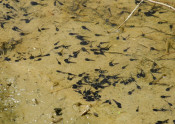 Conservation Technical Assistance Program (CTA) - USDA Natural Resources Conservation Service (NRCS) The Conservation Technical Assistance (CTA) program is a voluntary program administered by the National Resources Conservation Service (NRCS) to provide land users with the technical assistance needed to maintain and restore healthy productive landscapes. CTA assistance can help address a broad range of conservation topics including enhancement of fish and wildlife habitat, soil loss from erosion, agricultural waste and nutrient management, and long term sustainability of production lands. Land users such as agricultural and silvicultural producers, local governments, citizen groups, Tribal governments,... Read More →
Conservation Technical Assistance Program (CTA) - USDA Natural Resources Conservation Service (NRCS) The Conservation Technical Assistance (CTA) program is a voluntary program administered by the National Resources Conservation Service (NRCS) to provide land users with the technical assistance needed to maintain and restore healthy productive landscapes. CTA assistance can help address a broad range of conservation topics including enhancement of fish and wildlife habitat, soil loss from erosion, agricultural waste and nutrient management, and long term sustainability of production lands. Land users such as agricultural and silvicultural producers, local governments, citizen groups, Tribal governments,... Read More → Debt for Nature Program - USDA Farm Service Agency (FSA) The Debt for Nature (DFN) program is administered by the USDA Farm Service Agency (FSA). DFN is only available to persons with FSA loans secured by real estate. DFN allows eligible landowners to reduce their FSA debt while practicing wildlife stewardship on their farms. Eligible landowners can have a portion of their debt cancelled in exchange for protecting natural resources on marginal cropland and environmentally sensitive lands. Participants in the DFN program enter into a conservation contract of 10, 30, or 50 years... Read More →
Debt for Nature Program - USDA Farm Service Agency (FSA) The Debt for Nature (DFN) program is administered by the USDA Farm Service Agency (FSA). DFN is only available to persons with FSA loans secured by real estate. DFN allows eligible landowners to reduce their FSA debt while practicing wildlife stewardship on their farms. Eligible landowners can have a portion of their debt cancelled in exchange for protecting natural resources on marginal cropland and environmentally sensitive lands. Participants in the DFN program enter into a conservation contract of 10, 30, or 50 years... Read More →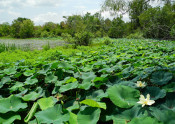 Environmental Quality Incentives Program (EQIP) - USDA Natural Resources Conservation Service (NRCS) EQIP About EQIP The Environmental Quality Incentives Program (EQIP) is a voluntary conservation program administered by the Natural Resources Conservation Service (NRCS). The program’s mission is to promote the compatibility of agricultural production, forest management, and environmental conservation. Financial and technical assistance are provided to enrolled landowners to implement conservation practices (structural and management) on eligible lands. Eligible lands include cropland, non-industrial private forestland, pastureland, ranchland, and other types of farm land. Applicants for an EQIP contract must control or own the... Read More →
Environmental Quality Incentives Program (EQIP) - USDA Natural Resources Conservation Service (NRCS) EQIP About EQIP The Environmental Quality Incentives Program (EQIP) is a voluntary conservation program administered by the Natural Resources Conservation Service (NRCS). The program’s mission is to promote the compatibility of agricultural production, forest management, and environmental conservation. Financial and technical assistance are provided to enrolled landowners to implement conservation practices (structural and management) on eligible lands. Eligible lands include cropland, non-industrial private forestland, pastureland, ranchland, and other types of farm land. Applicants for an EQIP contract must control or own the... Read More →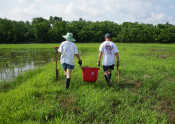 Five Star and Urban Waters Restoration Grant Program - National Fish and Wildlife Foundation The Five Star and Urban Waters Restoration Grant Program, administered by the National Fish and Wildlife Foundation (NFWF), develops community stewardship of natural resources by preserving ecologic services and enhancing wildlife habitat. Five Star Grant projects often concern water quality issues in target watersheds, stormwater runoff, and degraded shorelines in coastal, riparian, and wetland habitats. Five Star grants range from $20,000 to $50,000, and average $25,000 per project. Projects can occur on public land (such as a park) or private land (such as... Read More →
Five Star and Urban Waters Restoration Grant Program - National Fish and Wildlife Foundation The Five Star and Urban Waters Restoration Grant Program, administered by the National Fish and Wildlife Foundation (NFWF), develops community stewardship of natural resources by preserving ecologic services and enhancing wildlife habitat. Five Star Grant projects often concern water quality issues in target watersheds, stormwater runoff, and degraded shorelines in coastal, riparian, and wetland habitats. Five Star grants range from $20,000 to $50,000, and average $25,000 per project. Projects can occur on public land (such as a park) or private land (such as... Read More →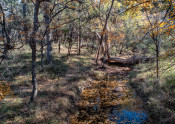 Forest Legacy Program (FLP) - Texas A&M Forest Service (TFS) About the Forest Legacy Program The Forest Legacy Program (FLP), administered by the Texas A&M Forest Service, the State of Texas, and USDA Forest Service, is a voluntary program which purchases conservation easements on forestland voluntarily offered for purchase by private landowners. Protecting priority forests from conversion to non-forested land use is the program’s goal. Forested wetland conservation is an aspect of this program. Eligible land must be in the Forest Legacy target area. Landowners must have clear title, be willing to permanently... Read More →
Forest Legacy Program (FLP) - Texas A&M Forest Service (TFS) About the Forest Legacy Program The Forest Legacy Program (FLP), administered by the Texas A&M Forest Service, the State of Texas, and USDA Forest Service, is a voluntary program which purchases conservation easements on forestland voluntarily offered for purchase by private landowners. Protecting priority forests from conversion to non-forested land use is the program’s goal. Forested wetland conservation is an aspect of this program. Eligible land must be in the Forest Legacy target area. Landowners must have clear title, be willing to permanently... Read More →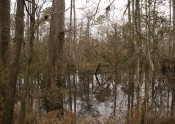 Forest Stewardship Program (FSP) - Texas A&M Forest Service (TFS) About the Forest Stewardship Program The Forest Stewardship Program, administered by Texas A&M Forest Service and their partner, USDA Forest Service, provides technical assistance to landowners who wish to sustainably manage their forested property. There is no cost to the landowner for assistance or forest plan preparation. More than 8,000 FSP plans have been created since FSP began in 1991, enrolling more than 1.4 million acres of Texas forests. Foresters help landowners tailor a management plan to their goals and unique forestland. This... Read More →
Forest Stewardship Program (FSP) - Texas A&M Forest Service (TFS) About the Forest Stewardship Program The Forest Stewardship Program, administered by Texas A&M Forest Service and their partner, USDA Forest Service, provides technical assistance to landowners who wish to sustainably manage their forested property. There is no cost to the landowner for assistance or forest plan preparation. More than 8,000 FSP plans have been created since FSP began in 1991, enrolling more than 1.4 million acres of Texas forests. Foresters help landowners tailor a management plan to their goals and unique forestland. This... Read More → Forest Taxation Program - Texas A&M Forest Service (TFS) Texas A&M Forest Taxation Program was developed to assist forestland owners in navigating taxes associated with operation and stewardship of a healthy forest. In silviculture, property taxes, cost-share assistance, capital gains taxes, and land and conservation easement donations are complex legal arrangements that may have taxation implementations; and timberland operation and ownership is not always well understood by tax professionals. The Forest Taxation Program website contains guides to the Timberland Property Tax in Texas, information on tax incentives associated with timberland, tax valuation... Read More →
Forest Taxation Program - Texas A&M Forest Service (TFS) Texas A&M Forest Taxation Program was developed to assist forestland owners in navigating taxes associated with operation and stewardship of a healthy forest. In silviculture, property taxes, cost-share assistance, capital gains taxes, and land and conservation easement donations are complex legal arrangements that may have taxation implementations; and timberland operation and ownership is not always well understood by tax professionals. The Forest Taxation Program website contains guides to the Timberland Property Tax in Texas, information on tax incentives associated with timberland, tax valuation... Read More →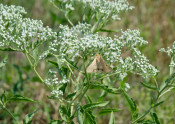 Guaranteed Conservation Loans - USDA Farm Service Agency (FSA) FSA Loans There are four main types of FSA loans: farm ownership, farm operating loans and microloans, emergency farm loans, and guaranteed farm loans (including conservation loans). While a borrower may qualify for one or any combination of these loans, the focus here will be on guaranteed farm ownership conservation loans. Guaranteed Loans The Farm Service Agency (FSA) administers a guaranteed loan program which assists farmers and other agricultural operators who would not normally qualify for standard commercial loans. This program is especially... Read More →
Guaranteed Conservation Loans - USDA Farm Service Agency (FSA) FSA Loans There are four main types of FSA loans: farm ownership, farm operating loans and microloans, emergency farm loans, and guaranteed farm loans (including conservation loans). While a borrower may qualify for one or any combination of these loans, the focus here will be on guaranteed farm ownership conservation loans. Guaranteed Loans The Farm Service Agency (FSA) administers a guaranteed loan program which assists farmers and other agricultural operators who would not normally qualify for standard commercial loans. This program is especially... Read More → Landowner Incentive Program - Texas Parks and Wildlife Department Landowner Incentive Program (LIP) The Landowner Incentive Program (LIP) is a voluntary conservation program administrated by Texas Parks and Wildlife Department and funded through the US Fish and Wildlife Service (USFWS) Partners for Fish and Wildlife Program, National Fish and Wildlife Foundation, and others. LIP provides financial assistance to landowners who wish to implement conservation practices, particularly for activities benefiting rare or at-risk species and valuable riparian areas and watersheds. LIP is a reimbursement program. Landowners will receive payment upon completion of the... Read More →
Landowner Incentive Program - Texas Parks and Wildlife Department Landowner Incentive Program (LIP) The Landowner Incentive Program (LIP) is a voluntary conservation program administrated by Texas Parks and Wildlife Department and funded through the US Fish and Wildlife Service (USFWS) Partners for Fish and Wildlife Program, National Fish and Wildlife Foundation, and others. LIP provides financial assistance to landowners who wish to implement conservation practices, particularly for activities benefiting rare or at-risk species and valuable riparian areas and watersheds. LIP is a reimbursement program. Landowners will receive payment upon completion of the... Read More →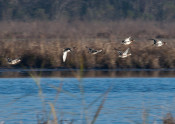 Mitigation Bank Credit: Landowners/Developers and Aggregators - Various Private and Nonprofit Entities Creating a Mitigation Bank Basic process for developing your own mitigation bank: Planning Pre-prospectus meeting with the US Army Corps of Engineers (USACE) Submission of draft prospectus for review by USACE. If USACE finds the prospectus feasible, it will be sent out on public notice for comment. Review by federal, state, and local agencies and general public Mitigation Bank Review Team assessment Mitigation bank instrument development – legal document for the bank Mitigation bank instrument is sent out for public notice Bank approval... Read More →
Mitigation Bank Credit: Landowners/Developers and Aggregators - Various Private and Nonprofit Entities Creating a Mitigation Bank Basic process for developing your own mitigation bank: Planning Pre-prospectus meeting with the US Army Corps of Engineers (USACE) Submission of draft prospectus for review by USACE. If USACE finds the prospectus feasible, it will be sent out on public notice for comment. Review by federal, state, and local agencies and general public Mitigation Bank Review Team assessment Mitigation bank instrument development – legal document for the bank Mitigation bank instrument is sent out for public notice Bank approval... Read More →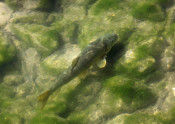 National Fish Passage Program - US Fish and Wildlife Service (USFWS) Dams in Texas According to the US Army Corps of Engineer’s National Inventory of Dams, Texas has over 7,000 dams, more than any other state. Most dams in Texas are privately owned, low-hazard earthen dams built between 1950 and 1989. The amount of damming along Texas waterways has led to freshwater stream habitat fragmentation. Aquatic species which migrate along the streams for spawning and other life cycle events are impeded by the obstructions. Today, many of the dams are obsolete and only... Read More →
National Fish Passage Program - US Fish and Wildlife Service (USFWS) Dams in Texas According to the US Army Corps of Engineer’s National Inventory of Dams, Texas has over 7,000 dams, more than any other state. Most dams in Texas are privately owned, low-hazard earthen dams built between 1950 and 1989. The amount of damming along Texas waterways has led to freshwater stream habitat fragmentation. Aquatic species which migrate along the streams for spawning and other life cycle events are impeded by the obstructions. Today, many of the dams are obsolete and only... Read More →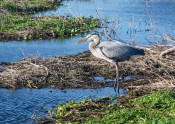 Neotropical Migratory Bird Conservation Act (NMBCA) Grants - US Fish and Wildlife Service (USFWS) About the Neotropical Migratory Bird Conservation Act Grants The Neotropical Migratory Bird Conservation Act’s (NMBCA) mission is to foster long-term conservation of neotropical migratory birds and their habitat in North America and the Caribbean. The upper Texas coast is a critical stopover point for migratory birds traveling along the Central and Mississippi Flyways, and is even used by birds traveling the Pacific and Atlantic Flyways. NMBCA, administered by the US Fish and Wildlife Service (USFWS) Division of Bird Habitat Conservation, provides cost-share... Read More →
Neotropical Migratory Bird Conservation Act (NMBCA) Grants - US Fish and Wildlife Service (USFWS) About the Neotropical Migratory Bird Conservation Act Grants The Neotropical Migratory Bird Conservation Act’s (NMBCA) mission is to foster long-term conservation of neotropical migratory birds and their habitat in North America and the Caribbean. The upper Texas coast is a critical stopover point for migratory birds traveling along the Central and Mississippi Flyways, and is even used by birds traveling the Pacific and Atlantic Flyways. NMBCA, administered by the US Fish and Wildlife Service (USFWS) Division of Bird Habitat Conservation, provides cost-share... Read More →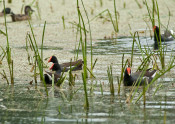 North American Wetlands Conservation Act (NAWCA) Grants - US Fish and Wildlife Service (USFWS) The North American Wetlands Conservation Act (NAWCA) mission is to preserve and enhance wetlands associated with migratory birds and other wildlife. NAWCA, administered by the US Fish and Wildlife Service (USFWS) Division of Bird Habitat Conservation, provides cost-share grants to organizations and individuals who have developed partnerships to implement wetland conservation projects in the US, Canada, and Mexico. Seventy NAWCA projects in Texas have conserved almost 190,000 acres of wildlife habitat! NAWCA grants are competitive and require at least a 1 to... Read More →
North American Wetlands Conservation Act (NAWCA) Grants - US Fish and Wildlife Service (USFWS) The North American Wetlands Conservation Act (NAWCA) mission is to preserve and enhance wetlands associated with migratory birds and other wildlife. NAWCA, administered by the US Fish and Wildlife Service (USFWS) Division of Bird Habitat Conservation, provides cost-share grants to organizations and individuals who have developed partnerships to implement wetland conservation projects in the US, Canada, and Mexico. Seventy NAWCA projects in Texas have conserved almost 190,000 acres of wildlife habitat! NAWCA grants are competitive and require at least a 1 to... Read More →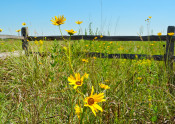 Purchase of Conservation Easements - Various Land Trust and Government Agencies Conservation easements often involve the donation of development rights of land. This donation is often used to obtain a tax deduction. However, in some cases, the development rights of land can be purchased by a willing land trust or government program for a one-time cash payment. Purchased conservation easements are also known as the purchase of development rights (PDRs). If there is funding available for the PDRs, the purchase price is often less than the value of the full value of the... Read More →
Purchase of Conservation Easements - Various Land Trust and Government Agencies Conservation easements often involve the donation of development rights of land. This donation is often used to obtain a tax deduction. However, in some cases, the development rights of land can be purchased by a willing land trust or government program for a one-time cash payment. Purchased conservation easements are also known as the purchase of development rights (PDRs). If there is funding available for the PDRs, the purchase price is often less than the value of the full value of the... Read More →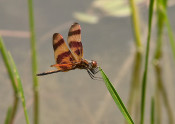 SWCD Technical Assistance - Texas State Soil and Water Conservation Board (TSSWCB) and Local Soil and Water Conservation Districts (SWCD) Soil and Water Conservation Districts (SWCD) are a resource for agricultural landowners to assess conservation issues on their land and develop solutions to these issues. The Texas State Soil and Water Conservation Board (TSSWCB) is the lead administrative organization for SWCDs. Each of the 216 SWCDs in Texas is governed by directors elected by local district landowners. TSSWCB funds program specialists which meet with districts monthly and advise SWCDs on conservation practices... Read More →
SWCD Technical Assistance - Texas State Soil and Water Conservation Board (TSSWCB) and Local Soil and Water Conservation Districts (SWCD) Soil and Water Conservation Districts (SWCD) are a resource for agricultural landowners to assess conservation issues on their land and develop solutions to these issues. The Texas State Soil and Water Conservation Board (TSSWCB) is the lead administrative organization for SWCDs. Each of the 216 SWCDs in Texas is governed by directors elected by local district landowners. TSSWCB funds program specialists which meet with districts monthly and advise SWCDs on conservation practices... Read More →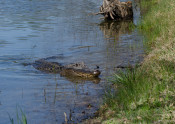 Tax Deduction via Donation of Conservation Easement - IRS What is a Conservation Easement? A conservation easement is a voluntary legal agreement between a property owner and a qualified entity (public agency or private conservation organization/non-profit), which will restrict the future land uses of a property to protect its natural and ecological qualities. Conservation easements can permanently protect land from development while the landowner continues to own the land. Conservation easements are designed with the unique characteristics of the land and land use goals of the landowner in mind. Conservation easements can protect land while still... Read More →
Tax Deduction via Donation of Conservation Easement - IRS What is a Conservation Easement? A conservation easement is a voluntary legal agreement between a property owner and a qualified entity (public agency or private conservation organization/non-profit), which will restrict the future land uses of a property to protect its natural and ecological qualities. Conservation easements can permanently protect land from development while the landowner continues to own the land. Conservation easements are designed with the unique characteristics of the land and land use goals of the landowner in mind. Conservation easements can protect land while still... Read More →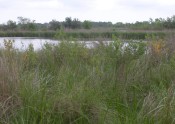 Texas Coastal Program - US Fish and Wildlife Service (USFWS) The Coastal Program assists with funding for coastal habitat projects. The Coastal Program partners with Federal programs, State agencies, Tribal and local governments, non-profit organizations, businesses, industry, land trusts, and private landowners who wish to fulfill habitat conservation goals on their land. The Coastal Program is a reimbursement program. The landowner is not reimbursed for the cost-share portion of the project cost until after the project is completed. Cooperative partnerships are emphasized by the Coastal Program. Coastal Program partners, known as cooperators,... Read More →
Texas Coastal Program - US Fish and Wildlife Service (USFWS) The Coastal Program assists with funding for coastal habitat projects. The Coastal Program partners with Federal programs, State agencies, Tribal and local governments, non-profit organizations, businesses, industry, land trusts, and private landowners who wish to fulfill habitat conservation goals on their land. The Coastal Program is a reimbursement program. The landowner is not reimbursed for the cost-share portion of the project cost until after the project is completed. Cooperative partnerships are emphasized by the Coastal Program. Coastal Program partners, known as cooperators,... Read More →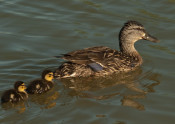 Texas Prairie Wetlands Project - Ducks Unlimited The Texas Prairie Wetlands Project (TPWP) is a partnership between Ducks Unlimited, Texas Parks and Wildlife Department, USDA Natural Resources Conservation Service, and U.S. Fish and Wildlife Service. The TPWP mission is to create overwintering habitat for waterfowl and improve health and survival rates before migration in the spring. TPWP works with private landowners in 28 counties on the Texas Gulf Coast to restore and enhance existing wetlands and to create new wetlands. TPWP provides technical assistance for surveying, engineering, and designing a wetland project and... Read More →
Texas Prairie Wetlands Project - Ducks Unlimited The Texas Prairie Wetlands Project (TPWP) is a partnership between Ducks Unlimited, Texas Parks and Wildlife Department, USDA Natural Resources Conservation Service, and U.S. Fish and Wildlife Service. The TPWP mission is to create overwintering habitat for waterfowl and improve health and survival rates before migration in the spring. TPWP works with private landowners in 28 counties on the Texas Gulf Coast to restore and enhance existing wetlands and to create new wetlands. TPWP provides technical assistance for surveying, engineering, and designing a wetland project and... Read More →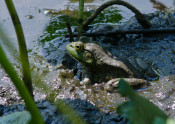 Water Quality Management Plan Program - Texas State Soil and Water Conservation Board (TSSWCB) Why Develop a Water Quality Management Plan? The Water Quality Management Plan Program (WQMP) is a voluntary program for agricultural and silvicultural producers. The goal is to identify and manage nonpoint source water pollution, which may include animal waste, soil erosion, and pesticide runoff. A WQMP includes site-specific, appropriate land practices, production practices, management measures, and technologies implemented to meet state standards for pollution prevention or abatement. The WQMP will be based on Natural Resource Conservation Service (NRCS) Field Office... Read More →
Water Quality Management Plan Program - Texas State Soil and Water Conservation Board (TSSWCB) Why Develop a Water Quality Management Plan? The Water Quality Management Plan Program (WQMP) is a voluntary program for agricultural and silvicultural producers. The goal is to identify and manage nonpoint source water pollution, which may include animal waste, soil erosion, and pesticide runoff. A WQMP includes site-specific, appropriate land practices, production practices, management measures, and technologies implemented to meet state standards for pollution prevention or abatement. The WQMP will be based on Natural Resource Conservation Service (NRCS) Field Office... Read More →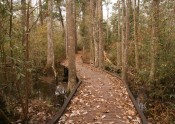 Water Resources Program - Texas A&M Forest Service (TFS) The Water Resources Program The Water Resources Program, administered by Texas A&M Forest Service (TFS), promotes the value of wetlands and supports their protection during forest operations through recommended best management practices (BMPs). The Water Resources Program at TFS provides technical assistance to landowners by working with forest operations to identify BMPs that could be implemented into their forest operation. In addition, the Water Resources Program offers a free publication of the Texas Forestry Best Management Practices Handbook on their website as well... Read More →
Water Resources Program - Texas A&M Forest Service (TFS) The Water Resources Program The Water Resources Program, administered by Texas A&M Forest Service (TFS), promotes the value of wetlands and supports their protection during forest operations through recommended best management practices (BMPs). The Water Resources Program at TFS provides technical assistance to landowners by working with forest operations to identify BMPs that could be implemented into their forest operation. In addition, the Water Resources Program offers a free publication of the Texas Forestry Best Management Practices Handbook on their website as well... Read More →

